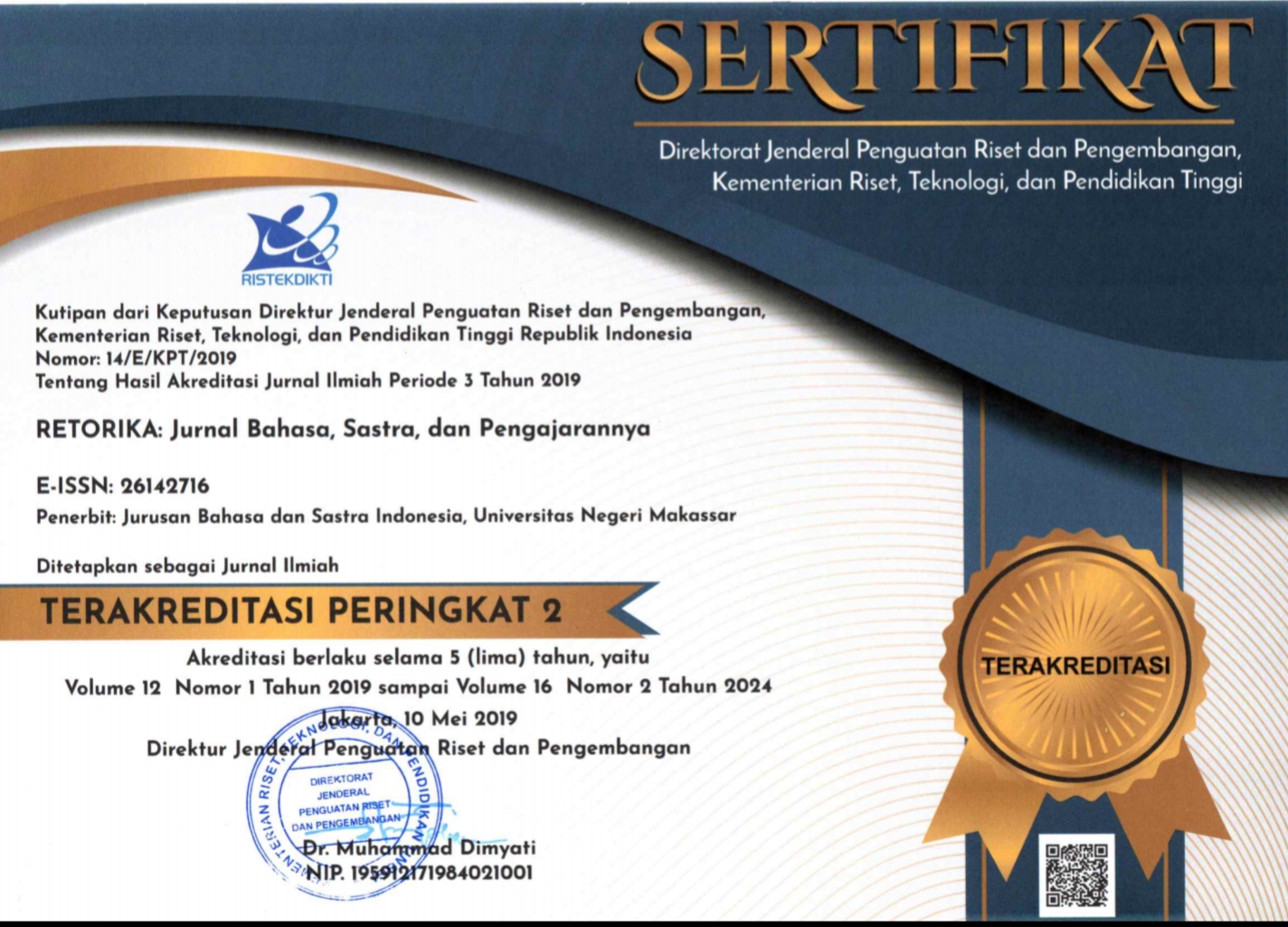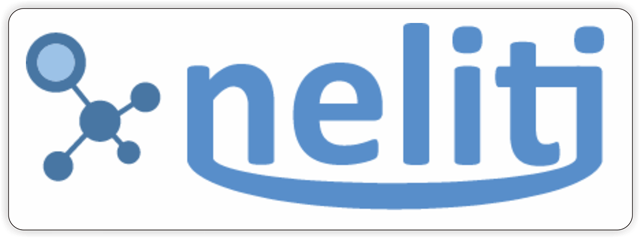SCAFFOLDING THE CREATIVE WRITING OF JENIUS WRITING STUDENTS
(1) STKIP YPM Bangko
(2) STKIP YPM Bangko
(3) STKIP YPM Bangko
(*) Corresponding Author
DOI: https://doi.org/10.26858/retorika.v14i2.18890
Abstract
The purpose of this study was to discuss the scaffolding techniques used in the Jenius Writing (JW) program to support students’ creative writing. The Jenius Writing 58 (JW 58) class was studied using a qualitative case study method. The data were gathered through documentation from posts on the JW 58 WhatsApp Group and Gen JW International’s Facebook page. Data analysis was performed using Miles and Huberman’s data analysis technique, which included data reduction, data visualization, and conclusion drawing. The findings reveal four distinct types of creative writing scaffolding techniques: (1) writing inconsequentially, directly, or as things; (2) utilizing a hypnotic pattern or employing wording and phrases that can influence the development of writing; (3) employing a paragraph pattern to build writing, specifically writing based on the structure of words or phrases that focus on a single concept; and (4) using questions to develop a piece of writing.
Keywords
Full Text:
PDFReferences
Ahangaria, S. Hejazi, M., & Razmjouc, L. (2014). The Impact of Scaffolding on Content Reten-tion of Iranian Post-elementary EFL Learners’ Summary Writing. Journal of Social and Be-havioral Sciences, 98, 83–89 http://dx.doi.org/10. 1016/j.sbspro.2014.03.392.
Baradaran, A. & Sarfarazi, B. (2011). The Impact of Scaffolding on the Iranian EFL Learners’ Eng-lish Academic Writing, Australian Journal of Basic and Applied Science, 5 (12), 2265--2273.
Bigdeli, R. A. (2015) Impact of Scaffolding on Complexity and Accuracy of Iranian EFL Learners’ Narrative Writing, Global Journal of Foreign language Teaching, 5 (2), 143--156.
Boyle, J. R., Hindman, A. H., (2015). Scaffolding the Persuasive Writing of Middle School Stu-dent. Middle Grades Research Journal, 10 (3), 43--59.
Boldrini, E., & Cattaneo, A. (2014). Scaffolding Collaborative Reflective Writing in a Vet Cur-riculum, Springer Science, Vocational and Learning. DOI 10.1007/s12186-9110-3
Elbow, P. (2007) Writing Without Teachers Merdeka dalam Menulis. Terj. Yani Fretty dan Ajeng AP. PT Indonesia Publishing.
Fikri, H. T. (2012). Pengaruh Menulis Pengalaman Emosional dalam Terapi Ekspresif Terhadap Emosi Marah pada Remaja. Jurnal Humani-tas, Vol. IX, 103--122
Gibbons, P. (2015). Scaffolding Language, Scaf-folding Learning: Teaching Second Language Learners in the Mainstream Classroom, Sec-ond Edition. USA on acid-free paper.
Herman, B., Eriyani, E., Harjono, H.S., & Pudjan-ingsih, W. (2020). The Impacts of Scaffolding on Metacognition and Students’ Ability of Es-says Writing. International Journal of Psycho-social Rehabilitation, 24 (07), 8355--8369.
Hosseinpour, N. & Koosha, M. (2016). Pedagogical Efficiency of Teacher-Led Whole-Class Scaf-folding as a Pre-Writing Task, Theory and Practice in Language Studies, 6 (93), 495--500.
Lloyd, M. (2007). Developing Academic Writing Skills: The Process Framework. Jurnal Nurs-ing Standard, 21 (40), 50--56. Retrieved from http;//www. ProQuest.com
Ormrod, J. E. (2008) Psikologi Pendidi-kan:Membantu Siswa Tumbuh dan Berkem-bang (Indrianti, W.; Septianan, E.; Saleh, A.Y.; & Lestari, P, Trans.) in Rahmad, R. (Eds). Jakarta: Erlangga.
Patesan, M. (2013). Writing Well – a Must in the Military Profession. Jounal of Social Behav-ioural Sciences, 69, 60--65. Retrieved from http;// www.ProQuest.com
Priyatni, Hamidah, Supeni, & Triantoro. (2008). Peningkatan Kompetensi Menulis Paragraph dengan Teknik Scaffolding, Bahasa dan Seni, 2, 206--219.
Riazi, M., & Rezaii, M. (2011).Teacher and Peer Scaffolding Behaviors: Effects on EFL Stu-dents’ Writing Improvement. Clesol 2010 Conference Proceedings, 55 – 63. 2005 Vol. 16(2), 23-38.
Sulindra, E (2018). Scaffolding As Used In the Writ-ing Process of an English Writing Course, Vocatio-Jurnal Ilmiah Ilmu Administrasi, 2, (1).
Sunendar, D., Cahyani, D., & Mulyadi, Y. 2014. Implementasi Metode Ecriture Créative Ber-basis Budaya Lokal untuk Meningkatkan Ket-erampilan Menulis Bahasa Perancis Level b1 delf, Bahasa dan Sastra, 14, 229--241
Shooshtari, Z. G., & Mir, F. (2014). ZPD, Tutor, Peer Scaffolding: Sociocutural Theory in Writ-ing Strategies Application. Social and Behav-ioral Sciences, 98, 1771–1776.
Susilowati, T. G. & Hasanat, N. U. (2011). Pengaruh Terapi Menulis Pengalaman Emosional Ter-hadap Penurunan Depresi pada Mahasiswa Ta-hun Pertama. Jurnal Psikologi, 38, 92--107.
Sutarmi, N. W., Suharsono, N., Warpala, I. W. S. (2013) Pengaruh Pembelajaran Scaffolding Terhadap Keterampilan Menulis Teks Recount Berbahasa Inggris dan Kreativitas Siswa Kelas VIII SMP Negeri 3 Manggis, e-journal Pro-gram Pascasarjana Universitas Pendidikan Ganesha Program Studi Teknologi Pembelaja-ran, 3.
Tarigan, H. G. (2008). Menulis Sebagai Suatu Ket-erampilan Berbahasa. (ed.revisi). Bandung: Angkasa.
Van de Pol, J., Volman, M., & Beishuizen, J. (2010). Scaffolding in Teacher-Student Interac-tion: a Decade of Research, Educ. Psycho. Rev. 22, 271--296.
Veerappan, Veeramuthu A/L; Suan, Wei H. & Sulaiman, T. (2011). The Effect of Scaffolding Technique in Journal Writing among the Sec-ond Language Learners. Journal of Language Teaching and Research, 4, 934--940.
Vygotsky, L.S. (1978). Mind in Society: The Devel-opment of Higher Psychological Processes, editor: Michael Cole, Vera John-Steiner, Syl-via Scribner, & Ellen Souberman. London: Harvard University Press
Wood, D., Bruner, J. S., & Ross, G. (1976). The Role of Tutoring in Problem Solving. J. Child Psychol. Psychiat, 17, 89--100.
Zsigmond, I. (2015). Writing es for Fostering Read-ing Comprehension. Journal of Social and Behavioral Sciences, 180, 1698–1703. http://dx.Doi .org/10.1016/j.sbspro.2015.05.073.
Article Metrics
Abstract view : 627 times | PDF view : 160 timesRefbacks
- There are currently no refbacks.
Copyright (c) 2021 elfa eriyani, Yus rizal, Anggia Pratiwi

This work is licensed under a Creative Commons Attribution-NonCommercial 4.0 International License.
Published by:
Department of Indonesian Language, Faculty of Languages and Literature, Universitas Negeri Makassar in cooperate with Asosiasi Dosen Bahasa dan Sastra Indonesia (ADOBSI) and Ikatan Program Studi Pendidikan Bahasa dan Sastra Indonesia (IKAPROBSI).
Address: Department of Indonesian Language Office, DG Building Second Floor, UNM Parangtambung, Daeng Tata Raya Street, Makassar, South Sulawesi, Indonesia
 Email: [email protected]
Email: [email protected]

RETORIKA: Jurnal Bahasa, Sastra,dan Pengajarannya is licensed under a Creative Commons Attribution-NonCommercial 4.0 International License.
















